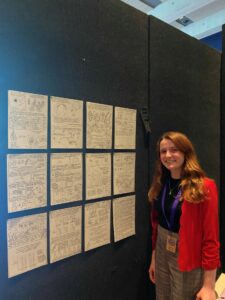Special Weather Statement issued April 28 at 7:47AM CDT by NWS Green Bay WI
Current watches, warnings, and advisories for Brown County (WIC009) WI
Current watches, warnings, and advisories for Brown County (WIC009) WI
https://api.weather.gov/alerts/urn:oid:2.49.0.1.840.0.588bc73933f432cb753d019de7b5db69191a313e.001.1.cap














 Water researchers are always looking for new and innovative ways to reach out to people about how the impacts of their work can help improve water quality. Serena George is one of those researchers.
Water researchers are always looking for new and innovative ways to reach out to people about how the impacts of their work can help improve water quality. Serena George is one of those researchers.


















